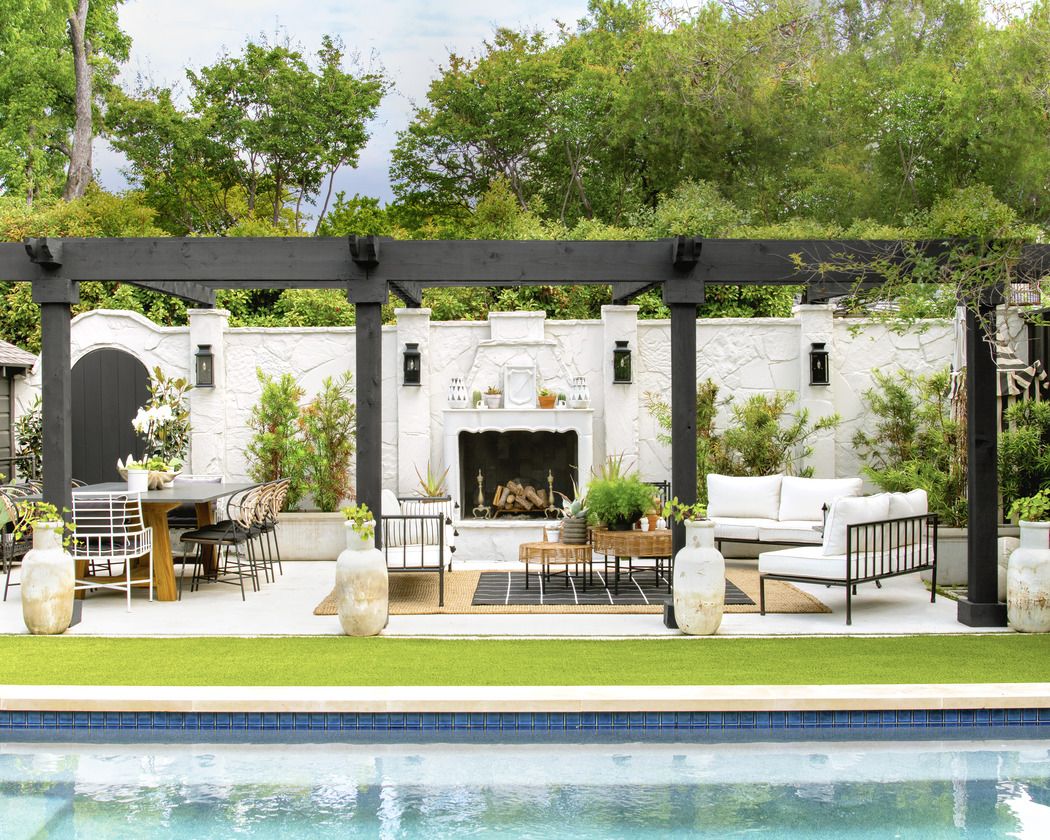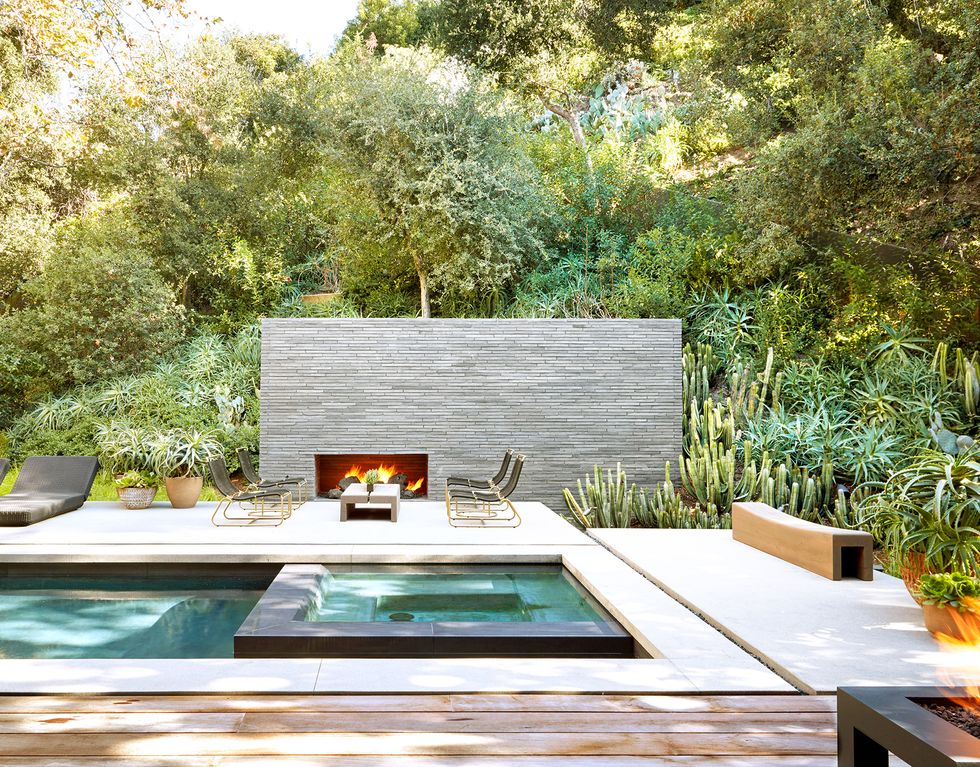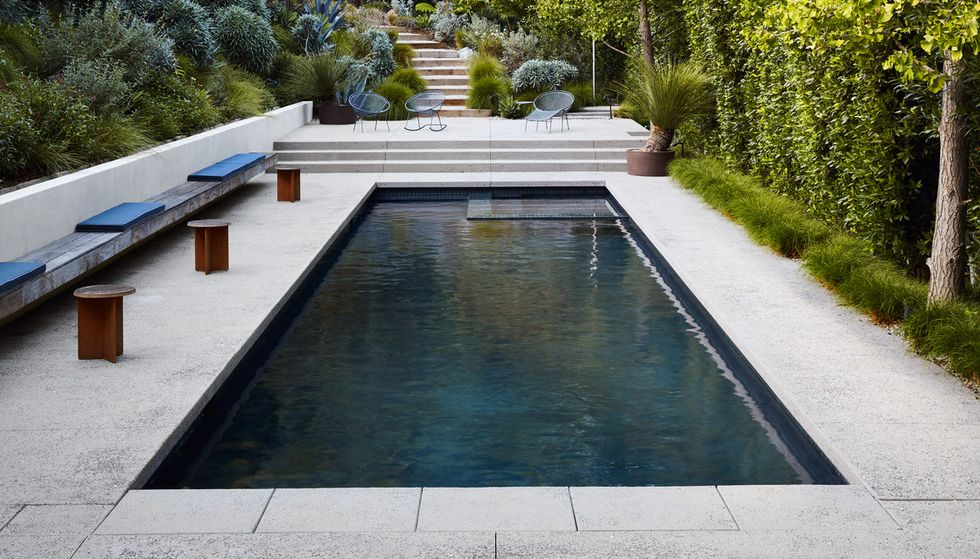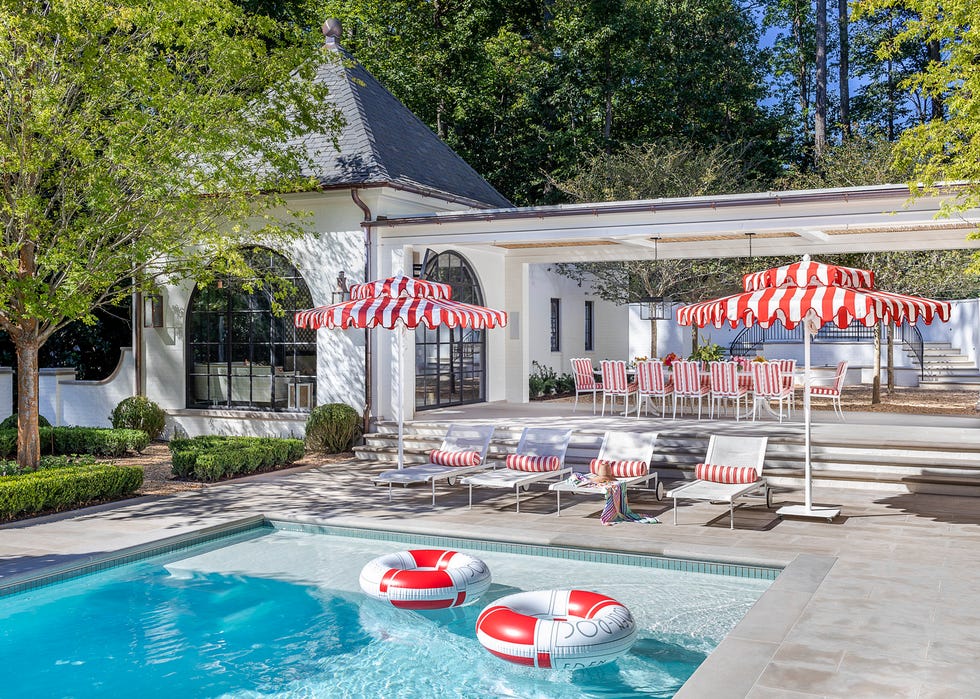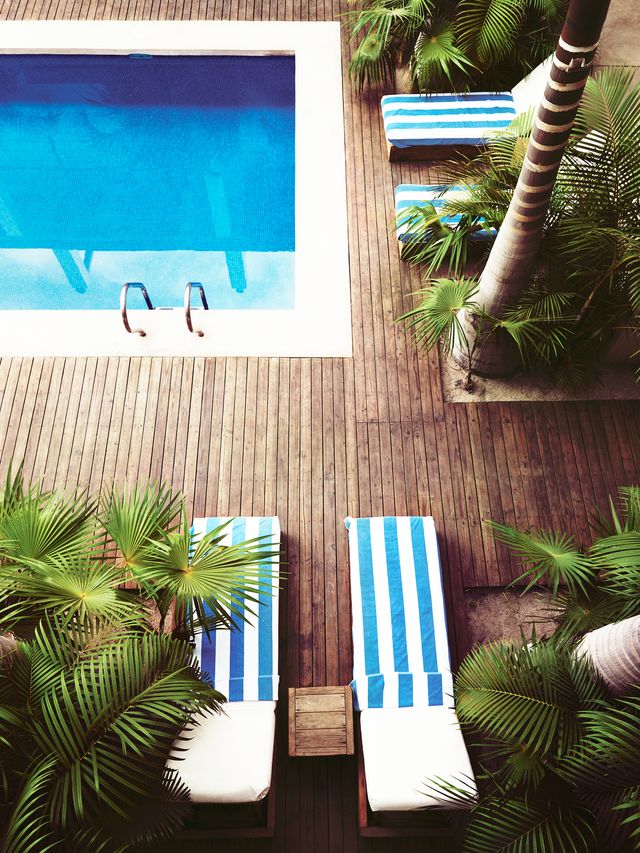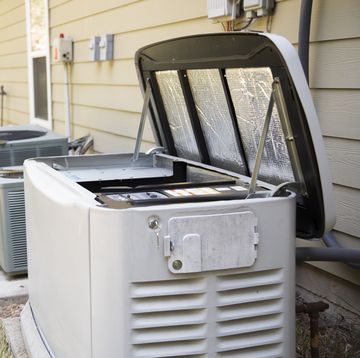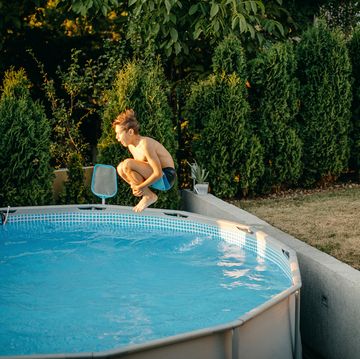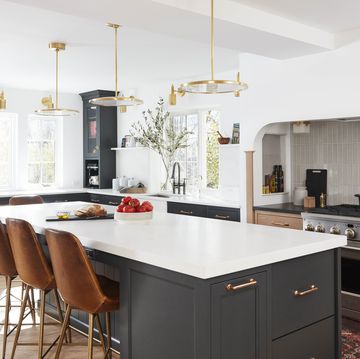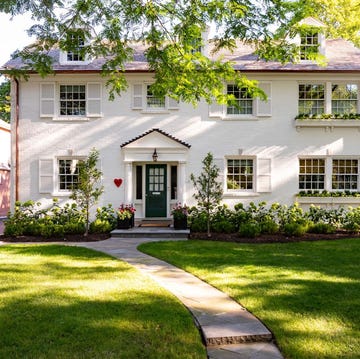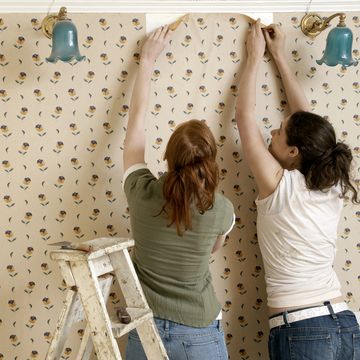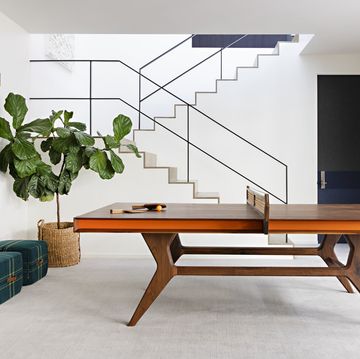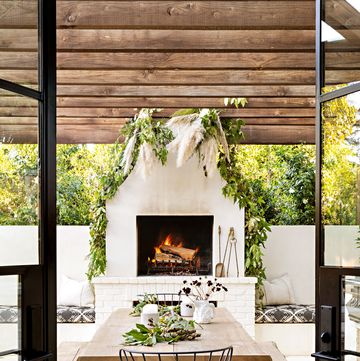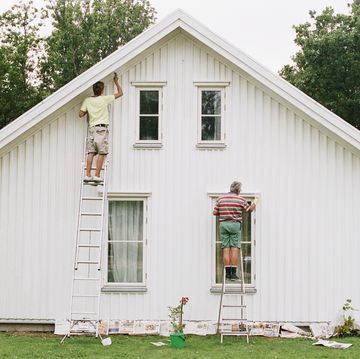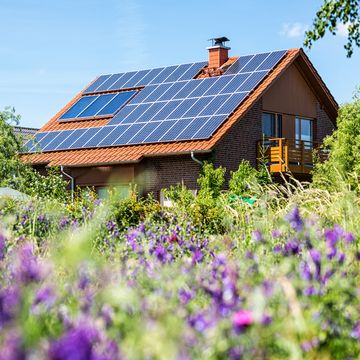What if you could host an al fresco dinner party out on a private deck? Or watch the sunset with a cocktail in tow after a long workday? Decks are a place for reflection as much as recreation, whether yours is surrounding an in-ground swimming pool or as a balcony extension in the front or backyard. As with many outdoor features, the options when embarking on a deck design, can feel overwhelming. Let's start with the basics: choosing the right decking materials to set a strong foundation, both visually and functionally. From fiberglass to concrete, grass, and all types of woods, there are lots of great materials to choose between.
And a lot of factors come into play when picking the best decking material for your home, like affordability, regional restrictions, and climate. Below is a detailed look at the pros and cons of all the best decking materials, whether you want to create a modern-looking deck or keep things traditional.
Pressure-Treated Wood
Pros: This is by far the most popular option today, as it is used on almost 75 percent of all new decks. Since the wood has been chemically treated to withstand rot, mold, and insects, people tend to gravitate toward it for longevity—and its low price point ($1.50 to $2.50 per square foot) doesn’t hurt either. It’s available pretty much everywhere, and easy to fasten.
Cons: Maintenance is definitely an issue with this kind of decking material—it has the tendency to crack or warp over time. In the past, pressure-treated wood was treated with chromate copper arsenate, a suspected carcinogen. Now, though, it’s treated with less toxic chemicals, making it relatively safe for the home.
Tropical Hardwood
Pros: Tropical hardwoods are everywhere: ipe, cumaru, and tigerwood, just to name a few. A true luxury choice, tropical hardwoods are grainy, hard, and durable, as well as naturally resistant to issues like rotting and insects.
Cons: Similar to redwood and cedar, they come with a pretty high price tag (around $8 to $12 per square foot), and are fairly dense, making it hard to drill holes into them. They don’t really accept stains or finishes very well either, so if you’re determined to add one, make sure that it’s been especially formulated for tropical hardwood. If you choose to not stain the deck, definitely apply a UV-blocking clear wood preservative every three to four years—since, like cedar and redwood, tropical hardwoods also weather to a silvery color when they’re not stained. It’s also important to know where your tropical hardwood comes from: Look for those from sustainably harvested sources.
Concrete
Pros: Versatile, practical, chic, and modern when well designed, concrete is a surprisingly good deck material option. Even better? It's super easy to clean. You can use concrete tiles or opt for a seamless polished concrete slab for a sleeker impression.
Cons: Some may feel like it has less character than other options, and it can also get very hot in the sun.
Exposed Aggregate
Pros: This sub-version of concrete has a lot of similar pros, including versatility and is easy to clean, as well as less expensive than other natural stone and wood types of decking materials. The difference is that aggregate concrete also offers texture and more traction, reducing the risk of slips. It also spalls and cracks less than the former.
Cons: It's not very easy to install yourself, but other than that decision mostly come down to whether or not you like how it looks. Here's an example of it in an elevated setting:
Redwood
Pros: Redwood is another really nice natural option, and shares several characteristics with cedar wood—the natural tannins, lightweight yet strong finish, and gorgeous color. However, redwood isn’t as easily available, particularly in the eastern regions of the country. (That might also be why it costs more than cedar: about $6 to $8 per square foot.)
Cons: It’s also important to note that both redwood and cedar require an annual power washing, as well as a coat finish every three to four years. This isn’t too intense of a maintenance program to be sure, but you definitely need to remember it!
Composites
Pros: Composite decking materials are made primarily from wood fibers and recycled plastics, and are among the fastest-growing decking options available today. Since they’ve been artificially created, they won't warp or splinter, and they also don’t get affected by rot or insects. This makes them a really durable option since they don’t require too much maintenance.
Cons: They’re maintenance-free: Mold and mildew can grow in damp spaces, and since they’re partially wood, some composites may end up showing signs of decay. They can be on the pricier side depending on the company you pick—around $7 to $10 per square foot—and you have to make sure that you choose a reputed, high-quality company.
Bluestone
Pros: Bluestone is rich color in color, it's organic, and it integrates well with traditional architecture. It's also a great nonslip surface when wet, making it particularly well-suited for rainy regions or backyards with swimming pools.
Cons: Bluestone can get uncomfortably hot when the sun is beating down on it in; travertine is a cool-to-the-touch stone alternative. Expect to spend about $4-$8 per square foot, according to ImproveNet.com.
Cedar
Pros: Most purists love cedar and redwood decks, particularly due to their gorgeous, rich color. Cedarwood has a lovely natural hue and is widely available throughout the US. It’s also extremely lightweight, yet strong, making it ideal for places with inclement weather conditions. It contains tannins and naturally occurring oils that make it resistant to rot and insects, but you can also treat it with a stain and sealer to prevent cracks or splinters. Note, also, that if you don’t use protectants, the color of your cedar will change to a soft grey over time.
Cons: The main issue is the price, averaging at about $3.75 to $5 per square foot. And note that all types of cedar aren’t the same: The four best grades of cedar to use for decking are architect clear, custom clear, architect knotty, and custom knotty (listed from clearest to most knotty). So the nicer you go, the more it’s going to cost you.
Grass
Pros: Contemporary, natural, peaceful, and colorful, turn your deck into a grassy lawn. It's also cheaper to install than others if you seed (think: 8 to 30 cents per square foot!)
Cons: Keep in mind that grass needs sun exposure to thrive. And if you use it as your decking material around a saltwater swimming pool, it can get brown spots when the water splashes it.
Aluminum
Pros: You might have never seen an aluminum deck before, but they do exist. They’re convenient in a lot of ways: They won’t rust, warp, splinter, rot, or crack, and they’re weather and mold-resistant as well. Since you don’t have to worry about insects, it’s extremely easy to take care of them, and they’ll never peel or blister. You’ll also be happy to know that when compared with wood, composite, and plastic lumber, aluminum decking is three to four times lighter, yet two to three times stronger.
Cons: Good things don’t come cheap—the most expensive of all the options, aluminum comes in at an average of $11 per square foot, with some companies going even higher than that. It also doesn’t have the gorgeous color of hardwood, so be sure that’s a look you’re willing to sacrifice for convenience.
Follow House Beautiful on Instagram.

Hadley Mendelsohn is the co-host and executive producer of the podcast Dark House. When she's not busy writing about interiors, you can find her scouring vintage stores, reading, researching ghost stories, or stumbling about because she probably lost her glasses again. Along with interior design, she writes about everything from travel to entertainment, beauty, social issues, relationships, fashion, food, and on very special occasions, witches, ghosts, and other Halloween haunts. Her work has also been published in MyDomaine, Who What Wear, Man Repeller, Matches Fashion, Byrdie, and more.
